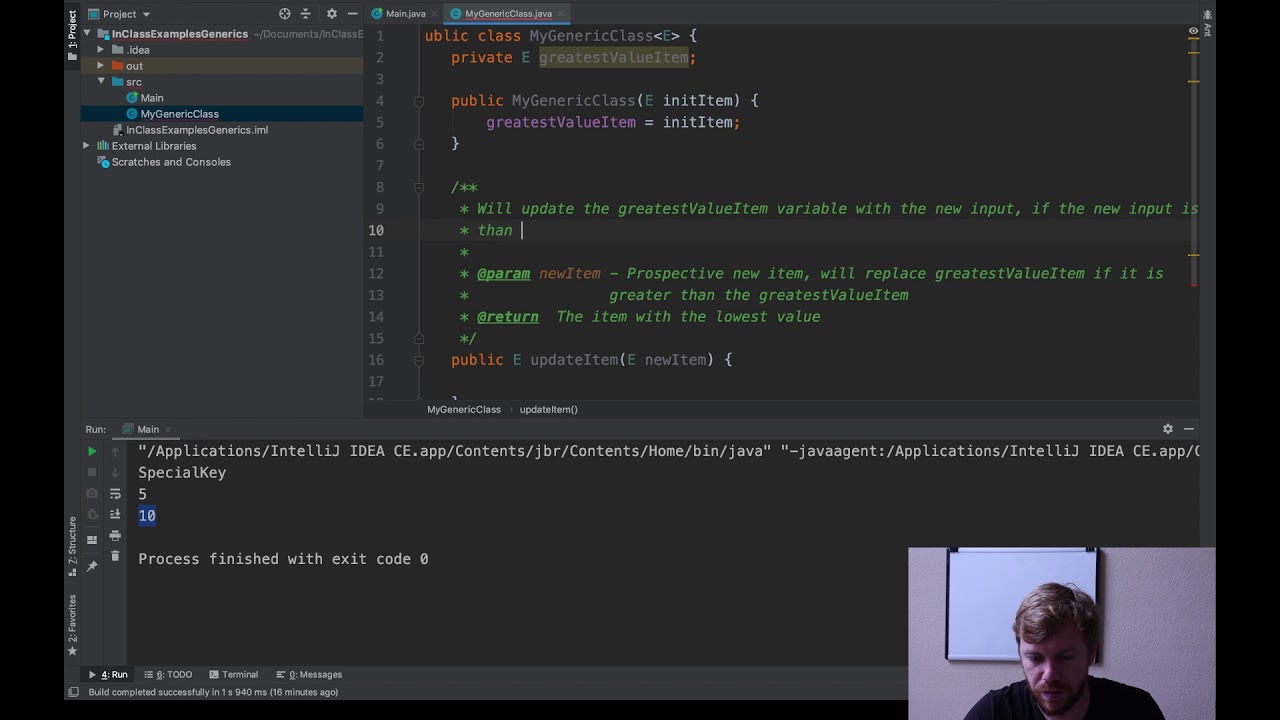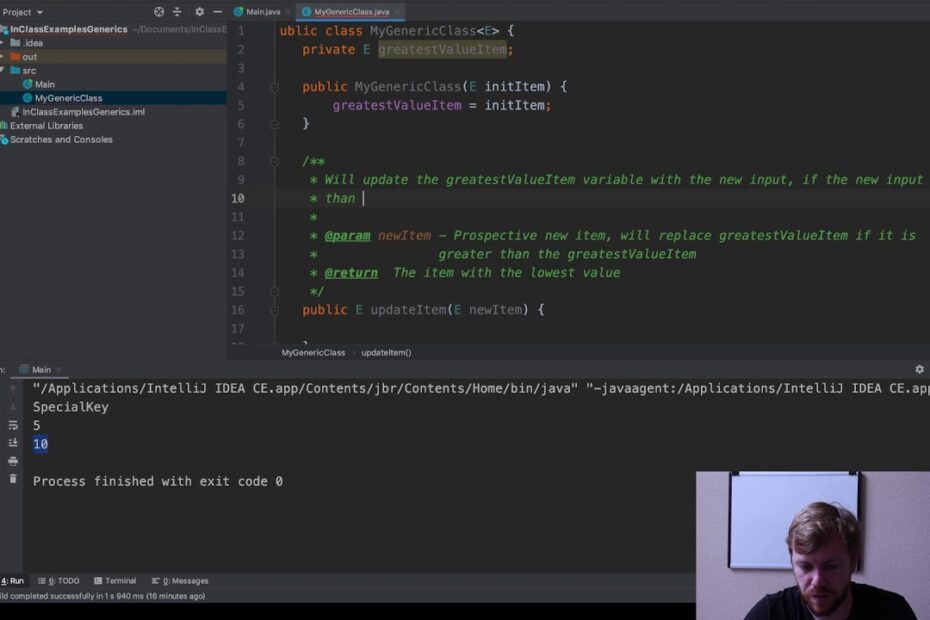Let’s discuss the question: how to compare generic types in java. We summarize all relevant answers in section Q&A of website Achievetampabay.org in category: Blog Finance. See more related questions in the comments below.

How do you compare generic data types in Java?
To compare generic types in Java, use the compareTo method.
What are the types of generics in Java?
- public class Box { private Object object; public void set(Object object) { this.object = object; } public Object get() { return object; } } …
- class name<T1, T2, …, Tn> { /* … …
- /** * Generic version of the Box class. …
- Box<Integer> integerBox;
Generics Comparable Interface Example
Images related to the topicGenerics Comparable Interface Example

How do you identify a generic type?
- Get an instance of Type that represents the generic type. …
- Use the IsGenericType property to determine whether the type is generic, and use the IsGenericTypeDefinition property to determine whether the type is a generic type definition.
How do you write a compareTo method in Java?
- public class CompareToExample{
- public static void main(String args[]){
- String s1=”hello”;
- String s2=”hello”;
- String s3=”meklo”;
- String s4=”hemlo”;
- String s5=”flag”;
- System.out.println(s1.compareTo(s2));//0 because both are equal.
What is equals method in Java?
Java String equals() Method
The equals() method compares two strings, and returns true if the strings are equal, and false if not. Tip: Use the compareTo() method to compare two strings lexicographically.
What is Java generics with examples?
The Java Generics allows us to create a single class, interface, and method that can be used with different types of data (objects). This helps us to reuse our code. Note: Generics does not work with primitive types ( int , float , char , etc).
How does a generic method differ from a generic type?
From the point of view of reflection, the difference between a generic type and an ordinary type is that a generic type has associated with it a set of type parameters (if it is a generic type definition) or type arguments (if it is a constructed type). A generic method differs from an ordinary method in the same way.
How do you add two generic values in Java?
- You have to add the numbers as the same type, so you could do x. intValue() + y. …
- you need to use some function of the generic type, just like @Oli said. – JohnnyAW. …
- This is kind of a silly (but nevertheless interesting) question. …
- Dont agree that this is a duplicate.
How do generics work in Java?
Generics means parameterized types. The idea is to allow type (Integer, String, … etc., and user-defined types) to be a parameter to methods, classes, and interfaces. Using Generics, it is possible to create classes that work with different data types.
What is a generic type parameter in Java?
Generic Methods
A type parameter, also known as a type variable, is an identifier that specifies a generic type name. The type parameters can be used to declare the return type and act as placeholders for the types of the arguments passed to the generic method, which are known as actual type arguments.
What is generics in Java What are advantages of using generics?
Generics allow the programmer to use the same method for Integer arrays, Double arrays, and even String arrays. Another advantage of using generics is that Individual typecasting isn’t required. The programmer defines the initial type and then lets the code do its job. It allows us to implement non-generic algorithms.
What are some advantages of using generic types?
- Type safety. …
- Less code and code is more easily reused. …
- Better performance. …
- Generic delegates enable type-safe callbacks without the need to create multiple delegate classes. …
- Generics streamline dynamically generated code.
Java Generics Tutorial
Images related to the topicJava Generics Tutorial

How do you make a class comparable?
To make an object comparable, the class must implement the Comparable interface. negative , if this object is less than the supplied object. zero , if this object is equal to the supplied object. positive , if this object is greater than the supplied object.
What is comparator and comparable?
1) Comparable provides a single sorting sequence. In other words, we can sort the collection on the basis of a single element such as id, name, and price. The Comparator provides multiple sorting sequences. In other words, we can sort the collection on the basis of multiple elements such as id, name, and price etc.
How do you compare strings in a loop?
Use the equals() method to check if 2 strings are the same. The equals() method is case-sensitive, meaning that the string “HELLO” is considered to be different from the string “hello”. The == operator does not work reliably with strings. Use == to compare primitive values such as int and char.
What is diff between equals and == in Java?
The major difference between the == operator and . equals() method is that one is an operator, and the other is the method. Both these == operators and equals() are used to compare objects to mark equality.
Why we use equals method in Java?
The equals method in Java is invoked every time an object is compared with another object to see if they are equivalent to each other or not i.e. are they the same object in terms of data type and value.
What is == and equals in Java?
In Java, the == operator compares the two objects to see if they point to the same memory location; while the . equals() method actually compares the two objects to see if they have the same object value.
What is generic type erasure?
Type erasure is a process in which compiler replaces a generic parameter with actual class or bridge method. In type erasure, compiler ensures that no extra classes are created and there is no runtime overhead.
How do you create a generic list in Java?
- Syntax. List<T> list = new ArrayList<T>(); …
- Description. The T is a type parameter passed to the generic interface List and its implemenation class ArrayList.
- Example. Create the following java program using any editor of your choice. …
- Output.
How do you call a generic method in Java?
…
NET object you want to use from Java:
- class GenericSample.
- {
- public void MyGenericMethod<T>(T arg1)
- {
- return;
- }
- public K MyGenericMethodWithTwoTypes<T,K>(T arg1)
- {
What is the purpose of generic types in Java Mcq?
1. What is the purpose of Generic types in Java? Code that uses Generic types has many advantages over non-generic code: Stronger type checks at compile time. A Java compiler applies strong type checking to generic code and issues errors if the code violates type-level security.
Generics In Java – Full Simple Tutorial
Images related to the topicGenerics In Java – Full Simple Tutorial

What is generic class and method in Java?
The Java Generics programming is introduced in J2SE 5 to deal with type-safe objects. It makes the code stable by detecting the bugs at compile time. Before generics, we can store any type of objects in the collection, i.e., non-generic. Now generics force the java programmer to store a specific type of objects.
What is generic collection in Java?
The generic collections are introduced in Java 5 Version. The generic collections disable the type-casting and there is no use of type-casting when it is used in generics. The generic collections are type-safe and checked at compile-time. These generic collections allow the datatypes to pass as parameters to classes.
Related searches
- how to compare types in java
- sort generic array java
- how to compare two generic objects java
- java comparable generic
- object equals java
- how to compare cell type in java
- Sort generic array Java
- generic comparator java
- Generic comparator java
- typescript compare generic type
- Compare generic types C#
- instanceof generic type
- compare generic types c
- cast object to generic type java
- what is generic type java
- How to compare two generic objects java
- how to compare two class types in java
- Instanceof generic type
- java compare generic type to class
Information related to the topic how to compare generic types in java
Here are the search results of the thread how to compare generic types in java from Bing. You can read more if you want.
You have just come across an article on the topic how to compare generic types in java. If you found this article useful, please share it. Thank you very much.

